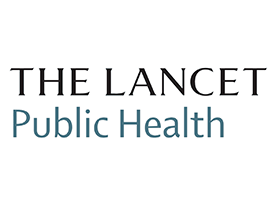
A systematic review and analysis carried out by a team of international researchers has contributed to the World Health Organization’s (WHO’s) new tuberculosis screening guidelines, according to a study published in the Lancet Public Health.
This study coincides with this year’s World TB Day on 24th March. TB remains one of the world’s leading infectious killers, with an estimated 1.4 million people dying from tuberculosis in 2020.
The study assessed the impact of active case finding interventions on TB epidemiology at community-level (numbers of people diagnosed with TB, numbers of people with infectious tuberculosis in the community, and rates of latent tuberculosis infection).
Many people with tuberculosis experience long delays before diagnosis, during which they are at risk of severe illness and death and can pass infection to others. Active case finding interventions aim to identify people with tuberculosis earlier in the community by offering screening, health promotion and linkage to effective treatment. They have been widely implemented through the 20th and 21st century but, until now, without high quality evidence for how effective they are.
The researchers systematically assessed data from 36 tuberculosis active case finding studies conducted throughout the world and included more than 110 million-person years of follow-up. They found that active case finding interventions can reduce the prevalence of tuberculosis in communities, if targeted to areas where disease is common and using high-intensity screening approaches.
LSTM’s Dr Peter MacPherson, who led the study, said: “Tuberculosis remains one of the most important diseases globally, and disproportionately affects the poorest people. Although these programmes have been implemented in many communities and countries throughout the globe, we have until now had little evidence to say whether or not they are effective. In this study, the largest of its kind ever conducted, we synthesised all the available evidence and showed that active case finding can reduce community prevalence of tuberculosis, if delivered with sufficient intensity and coverage.”
Dr Rachael Burke from the London School of Hygiene and Tropical Medicine (LSHTM) and Malawi Liverpool Wellcome Trust (MLW) is first author on the study. She said: “Active case finding for tuberculosis is likely to increase the number of people with tuberculosis identified and treated, and, might be able to reduce prevalence of tuberculosis in communities. However, there is still a lot we don’t know, and we recommend that where active case finding interventions are introduced, more data should be collected to address knowledge gaps about benefits and harms in different settings and in different populations.”
The authors recommend that further research is still needed to investigate which communities can benefit most from active case finding interventions, and how they may be most effectively and efficiently delivered to maximise benefits for individuals and communities.
Community-based active case-finding interventions for tuberculosis: a systematic review – As published in Lancet Public Health; 22 March 2021 https://doi.org/10.1016/ S2468-2667(21)00033-5